When it comes to shipping for your retail or e-commerce operations, bring the best offer to the table. You have three options: free, fast, and tracked shipping. But the question is: Which among the three converts the best?
Enter split testing, one of the best ways to boost your conversion. Also known as A/B testing, it involves creating and comparing two versions of a web page. This process enables you to optimise your website, which can positively impact your shipping operations.
In this article, we'll explore the three types of delivery offers to determine which one converts the best. Read on to learn how to set up A/B testing for your shipping operations to boost your conversion.
Basic Types of Shipping Offers
Shipping is a crucial aspect of your retail or e-commerce business. What good are your order fulfilment, warehouse management, and picking and packing processes if your shipping operations are lousy? Remember, the ultimate goal is to ensure the products or packages arrive at the customers' doorsteps in a safe manner and on time!
As such, set robust shipping strategies in place, whether you're doing so locally in the UK or across the globe. But what better way to implement effective tactics than to offer three options: Free, fast, and tracked shipping? Take a glimpse at the table below to see an overview of how they differ:
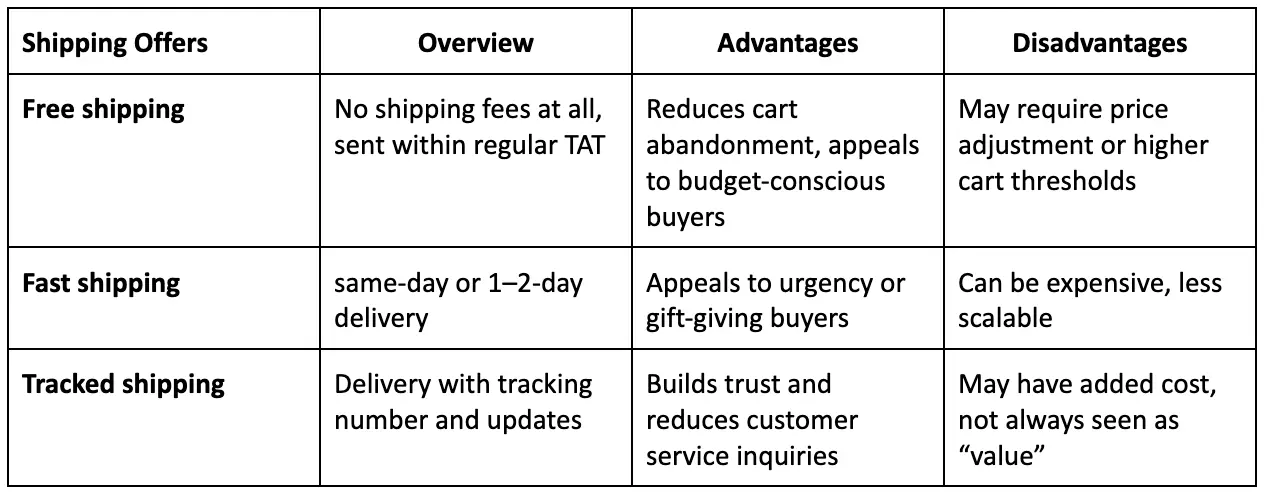
Let's expound on each of them.
Free shipping
Free shipping is exactly what it is—delivering packages to customers without them having to pay a fee. However, there's a standard delivery turnaround time (TAT) for your retail or e-commerce operations to follow.
This shipping option appears to be the best way to convert for your business. It appeals to buying consumers who are looking to save up. It also significantly lowers your abandonment rate, as most buyers are deterred from checking out due to higher delivery fees.
On the flip side, it might negatively impact your operating costs. That's why you may need to impose higher prices or cart thresholds. This covers shipping expenses, including courier payments and higher tariffs for imported goods, as per the de minimis rule.
The financial health of your retail or e-commerce operations can affect your ability to offer competitive shipping options. Rising costs, inventory issues, or changing shipping rates can make these harder to sustain. Exploring California debt consolidation can free up your capital to invest in better shipping and improve the customer experience.
Fast shipping
Fast shipping requires an expedited delivery as per the customer's request. The delivery usually happens on the same day or within two days. However, this request often comes with a higher shipping fee.
This shipping option is ideal for customers who need the packages sent almost immediately. It usually appeals to buyers who are sending gifts to loved ones or those needing pertinent goods or items delivered right away.
Meanwhile, fast shipping can be costly for the average consumer. Since it's an expedited request, it comes with a hefty delivery fee. This could compromise your conversion rate should the customers decide not to proceed with the purchase.
For retail or e-commerce businesses seeking to enhance their shipping speed, a robust infrastructure becomes essential. You should also streamline your warehouses, fulfilment centres, and distribution hubs. Securing a last-mile delivery hub or a larger central warehouse and obtaining support for acquiring or leasing commercial property is crucial for scaling shipping operations.
Tracked shipping
Tracked shipping is the most complicated among the three options. Why? It requires a tracking number to monitor delivered goods or items and to send tracking updates to customers.
This shipping option is best for reducing inquiries since customers receive updates every step of the way. They are also able to track the packages themselves via your digital platform. That's a great way to build consumer trust and encourage repeat purchases!
However, tracked shipping might be complex, which requires extra cost. You have to invest in tools and resources as well as a customer support team responsible for monitoring packages and updating customers.
Retail and e-commerce businesses usually partner with shipping service providers to ensure successful delivery operations.
That's why the global courier, express, and parcel market is predicted to grow from $461.69 billion in 2023 to $925.48 billion by 2030 at a 10.6% compound annual growth rate (CAGR). This market plays a key role in worldwide logistics, enabling the delivery of goods and documents locally and globally.
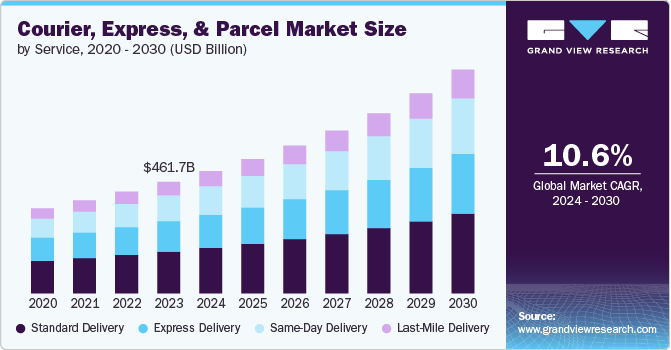
Learn how to conduct A/B testing for your shipping options in the next section.
How To Set Up A Split Test for Shipping Offers
There's no denying the value of shipping in retail or e-commerce operations. In the UK, the shipping industry is the lifeblood of the economy, contributing over £16 billion in GVA. About 95% of goods or items arrive in the country by ship.
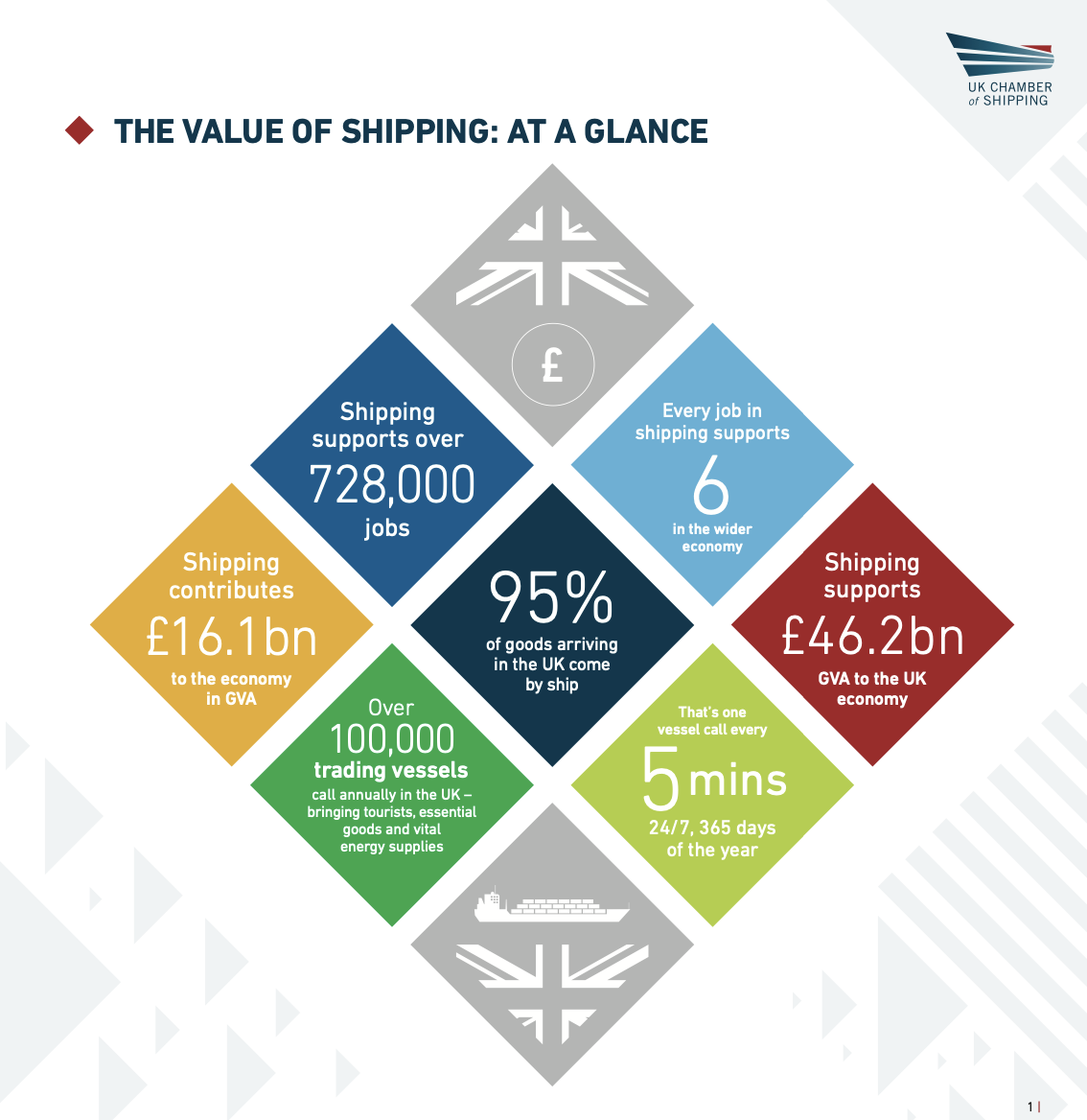
As a business, you aspire to excel in e-commerce shipping or retail delivery. Whether offering free, fast, or tracked shipping, see what option converts the best. That's where A/B testing comes in, helping you optimise your web page and boost your conversion rate.
That said, here's how to set up split testing for your shipping offers:
1. Define what to test
A/B testing covers a lot of areas, whether it's your website, email, or landing page. However, you have to test the web page that directly affects your shipping operations. So, the first step to take is to identify what to test:
- Offer types: In this context, you primarily aim to see which shipping offers convert the most. Is it free, fast, or tracked shipping?
- Copy placement: Identify the areas of your website you want to test. What web are you seeking to optimise: your homepage, product page, or cart?
- Content messaging: What message are you planning to convey? A few examples are "free shipping today only" vs. "Get your packages shipped as soon as possible vs. "track your order every step of the way."
Further, the success of any A/B test starts with knowing your audience and market. Look at what competitors offer, what customers search for, and which products are in demand so you can base your tests on real insights and not just guesses.
Lastly, before running a big test, it also helps to know the competitive landscape and search trends. Learning how to check keyword difficulty can show you how hard it is to rank for specific shipping terms or product categories. Doing so helps you shape promotions and find profitable niches for your store.
2. Set metrics to measure
Aside from defining your testing goals, also establish your key targets in place. Consider retail or ecommerce metrics to boost sales or increase your conversions. Clearly define your key metrics for split testing:
- Conversion rate—The percentage of visitors who complete a purchase
- Cart abandonment rate—The percentage of shoppers who add items to their cart but don't check out
- Average order value (AOV)—The average amount spent per order
- Customer satisfaction (CSAT)—A score that measures how happy customers are with your service
- Product returns or support tickets—Indicators of post-purchase issues, including the risk of fulfilment fraud
Eric Do Couto, Head of Marketing at Visualping, suggests setting KPIs for A/B testing. They also do this for their split tests to ensure clear parameters and provide testing guidance.
Couto says, "Setting clear KPIs before an A/B test gives you measurable benchmarks to work toward. It keeps your experiments focused, your data actionable, and your team aligned on what success looks like. Without defined metrics, you're just testing blindly, and that's a fast track to wasted time, effort, and resources!"
3. Establish test duration and sample size
Enough preparation is key to a successful A/B testing. How long will your split test take place, and what scope of your web page does it cover? Whether you're looking to optimise shipping operations or lower shipping costs, consider two factors:
- Test duration: This is the length of time needed to gather enough data for accurate, reliable results.
- Example: Running the test for at least two weeks to capture both weekday and weekend shopping behaviour.
- Sample size: This is the number of visitors or orders included in the test to ensure the findings reflect your audience as a whole.
- Example: Testing with at least 5,000 visitors to ensure the results are statistically significant.
Pro Tip: Aim for balance. Keep your test long enough to get accurate results, but not so long that it delays decisions. Meanwhile, pick a sample size that represents your audience well, but avoid making it so large that you waste time, effort, and resources.
4. Conduct split testing for shipping offers
Now, it's time to perform A/B testing for your shipping offers, whether for free, fast, or tracked shipping. How do you go about doing so? Remember, decide what to test (shipping offers, placement, and message) and factor in your testing (sample size and test duration).
Of course, the specific split testing version varies. There's no one-size-fits-all sample, as you have to consider your shipping options, business website, and content messaging. However, you can draw inspiration from the following case studies:
- Case study 1. TrailCam Pro, an eCommerce site for trail cameras, boosted sales by 20% simply by moving its free shipping and returns policy from checkout to the site's global header (have a sneak peek of the simple change made in the image below). This minor visibility tweak addressed customer objections upfront, building trust and reducing hesitation.

- Case study 2. Sport Chek increased purchases by 7.3% by reframing its free shipping message in the shopping cart from a plain note to a bold, celebratory "Congratulations, You Qualify for Free Shipping!" (spot the difference in the first and second images below). The change showed how placement, design, and tone can make perks more persuasive and reduce cart abandonment.
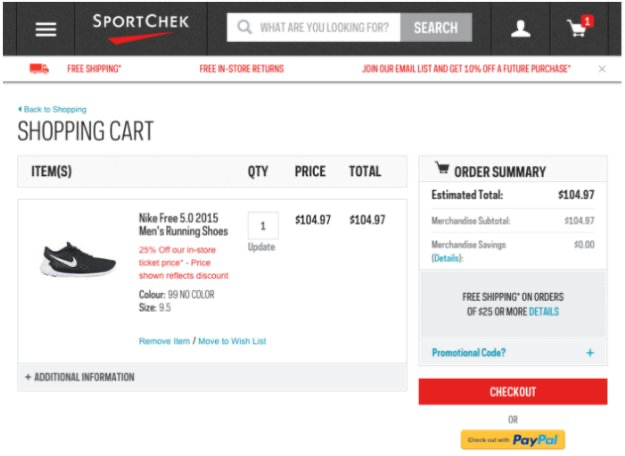
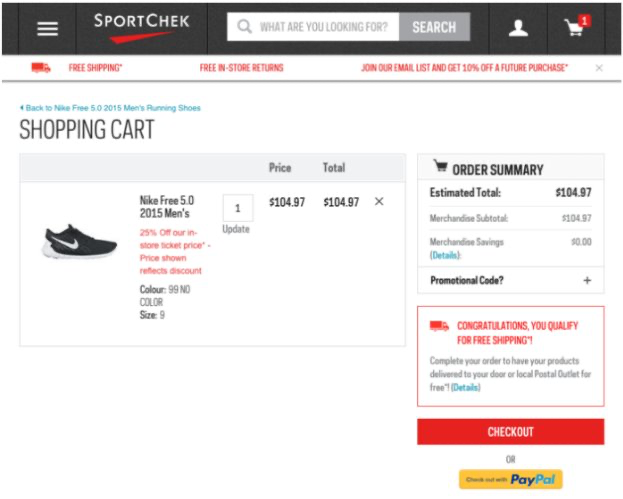
- Case study 3. Grene, a Polish agricultural products brand, used split testing to revamp its mini cart with clearer CTAs, product totals, and navigation. Over 36 days, purchases doubled, cart visits rose, and conversions improved. This goes to show that small design tweaks can have a big payoff!
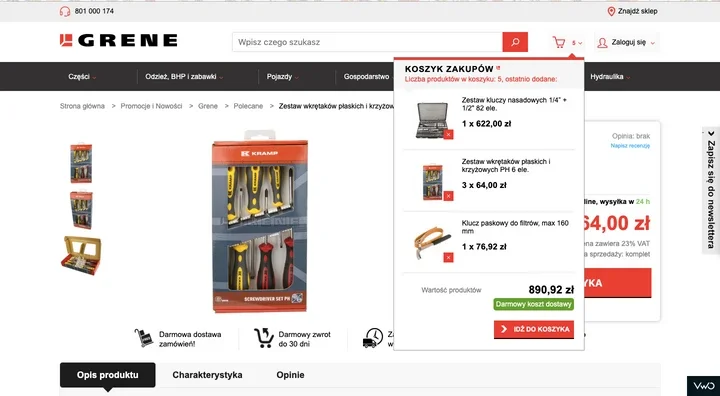
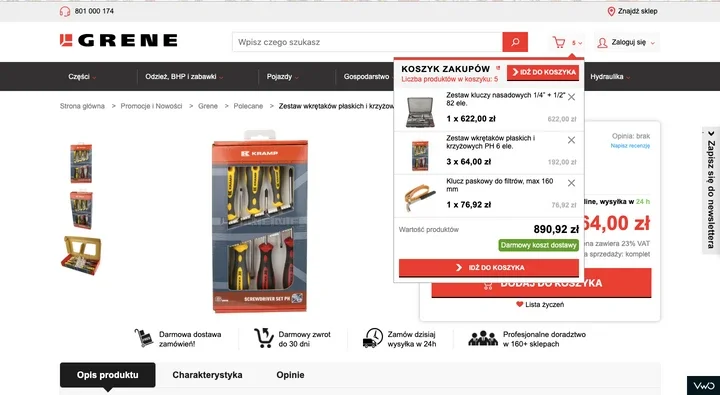
When testing shipping options like "free," "fast," or "tracked," the goal is to boost sales and keep customers happy. But the whole journey, from shopping to delivery, impacts loyalty. Show your brand's personality in every detail, even packaging and branded merch.
For instance, high-quality design t-shirts for your team or giveaways can strengthen your brand and team culture, leading to better service. Like optimised shipping, these small touches create a smooth, memorable experience that keeps customers coming back.
5. Analyse results and draw insights
The final step of your A/B testing for your shipping operation is the most crucial part. This entails drawing insights from the analysed results used to optimise your web page and boost your conversion rate. The whole process involves the following steps:
- Factor in your business. Consider your product type, target audience, and industry to ensure your insights are relevant.
- Record the tests. Track variations, such as free, fast, and tracked shipping for accurate comparison.
- Segment the results. Break down data by device, location, or whether users are new or returning.
- Interpret the results. Use your analysis to uncover patterns and opportunities for improvement.
- Optimise your shipping offers. Streamline your delivery service options to maximise conversions and customer satisfaction.
Nicolas Breedlove, CEO at PlaygroundEquipment.com, recommends conducting A/B testing one step at a time. She suggests starting with free shipping, then proceeding with fast shipping, and finally with tracked shipping.
Breedlove explains, "Approach A/B testing step-by-step to truly understand what works. Test one shipping variable at a time so you can pinpoint which changes have the biggest impact on conversions. That's how you turn data into decisions that drive real growth."
In today's business landscape, it's crucial to offer shipping options for your retail or e-commerce operations. As cited above, you have three options: Free, fast, and tracked shipping. However, which is best at converting? That's where split testing comes in!
That said, follow our crucial steps above for conducting your A/B testing. Begin by setting your testing goals and targets, and then assess the results to optimise your website. More importantly, perform robust testing for the three types of shipping offers with the right sample and test duration.
Ultimately, your split testing will help you uncover the shipping offer best for boosting your conversion. Bigblue can help you on this crucial aspect of your e-commerce operations with its fulfilment centres—Sign up now to book a demo!
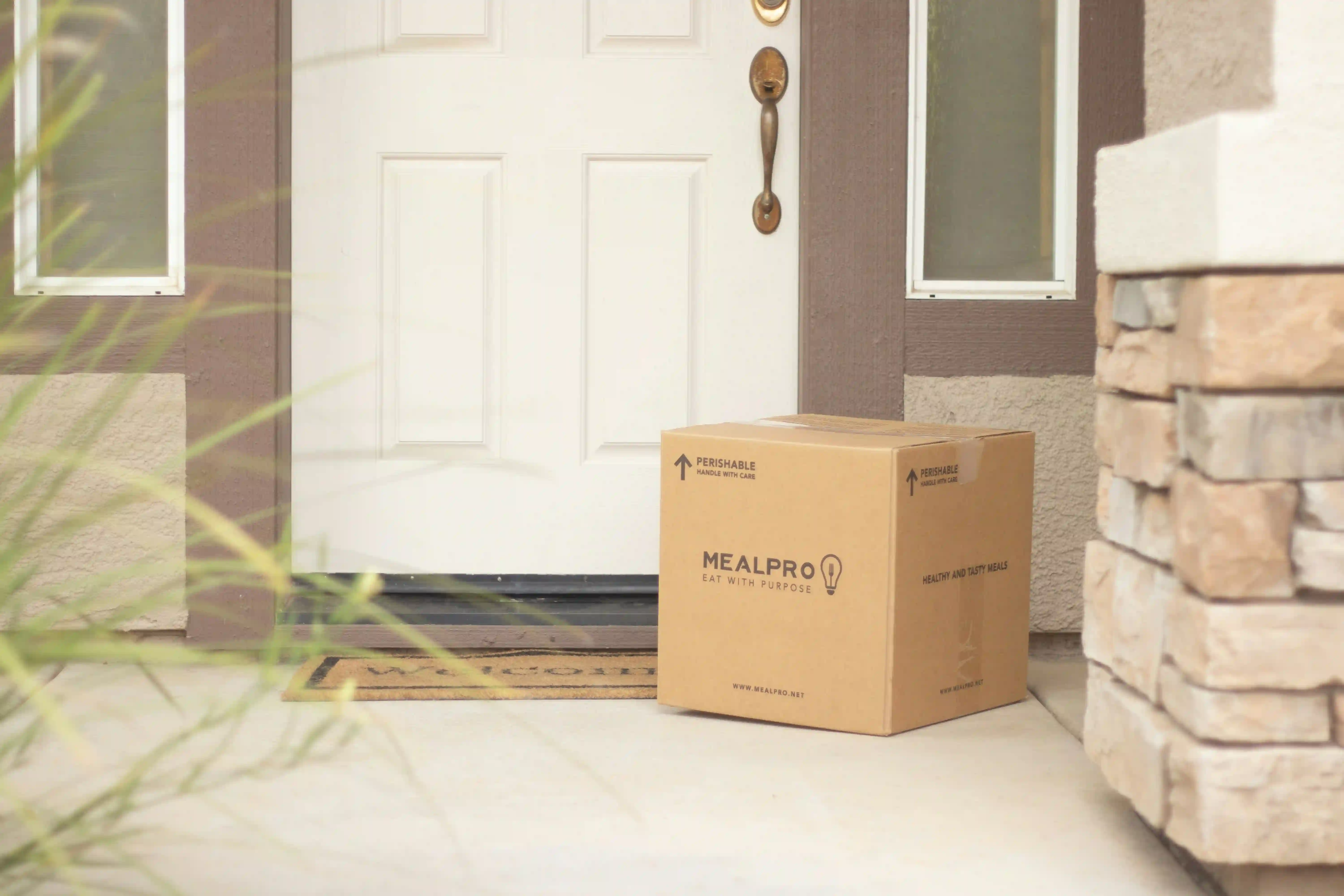

.webp)








